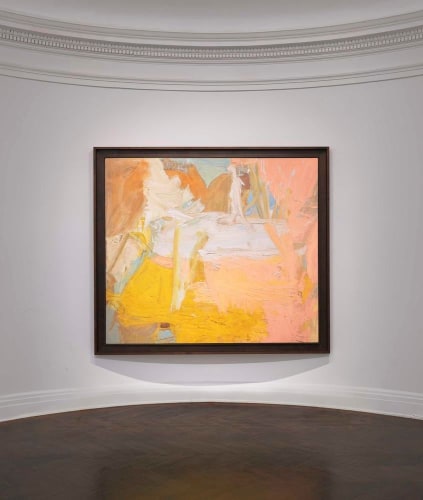
By: Allan Schwartzman
To the rescue: the glorious de Kooning exhibition currently on view at Mnuchin Gallery (“De Kooning: Five Decades”, 19 April-15 June). Precisely and lovingly selected, the exhibition spans the 50 years of the artist’s maturity, with drawings, paintings on paper and canvases that exemplify some of the greatest achievements in Modern art, when there were battles worth waging, and painting was painting.
Every work, every section and every mark is bursting with exhilaration and brilliance. The curatorial taste of this exhibition also shows the amazing range of palette that made de Kooning one of the most daring colorists of the 20th century.
De Kooning fought with the canvas, probing every inch of it with a nimble brush and complex layering. He vanquished demons: his own and those of painting in general—particularly the long shadow of Cubism and its revolutionary approach to pictorial space (which, while defining the spatial challenges of post-Renaissance painting, also identified a radical new way of thinking that would take nearly half a century to transcend).
One could distinguish many of the great artists of Modern art as warriors or lovers, those whose strength comes through struggle and those whose greatest expression is nurtured through freedom—the difference between Picasso and Matisse. At first, de Kooning was a fighter, for he had a fight worth waging. Once he’d vanquished the demons, out came the lover, a pastoralist. One of the great lessons of five decades of de Kooning is that the exhibition tells an epic story of an artistic battle with a happy ending (of sorts)—the warrior finding his freedom.
I am not sure who in recent decades is sounding an artistic battle cry, one worth fighting. Many have sought to—lots of painting in the 1980s showed us that. Indeed, today’s most urgent artistic battles are not within the formal language of painting, but rather are focused on the self and the wider culture, and are being explored through content, narrative, identity, voice—and the frame of who gets heard. These are broader societal issues; may painting find glorious urgent purpose in this post-spatial period.